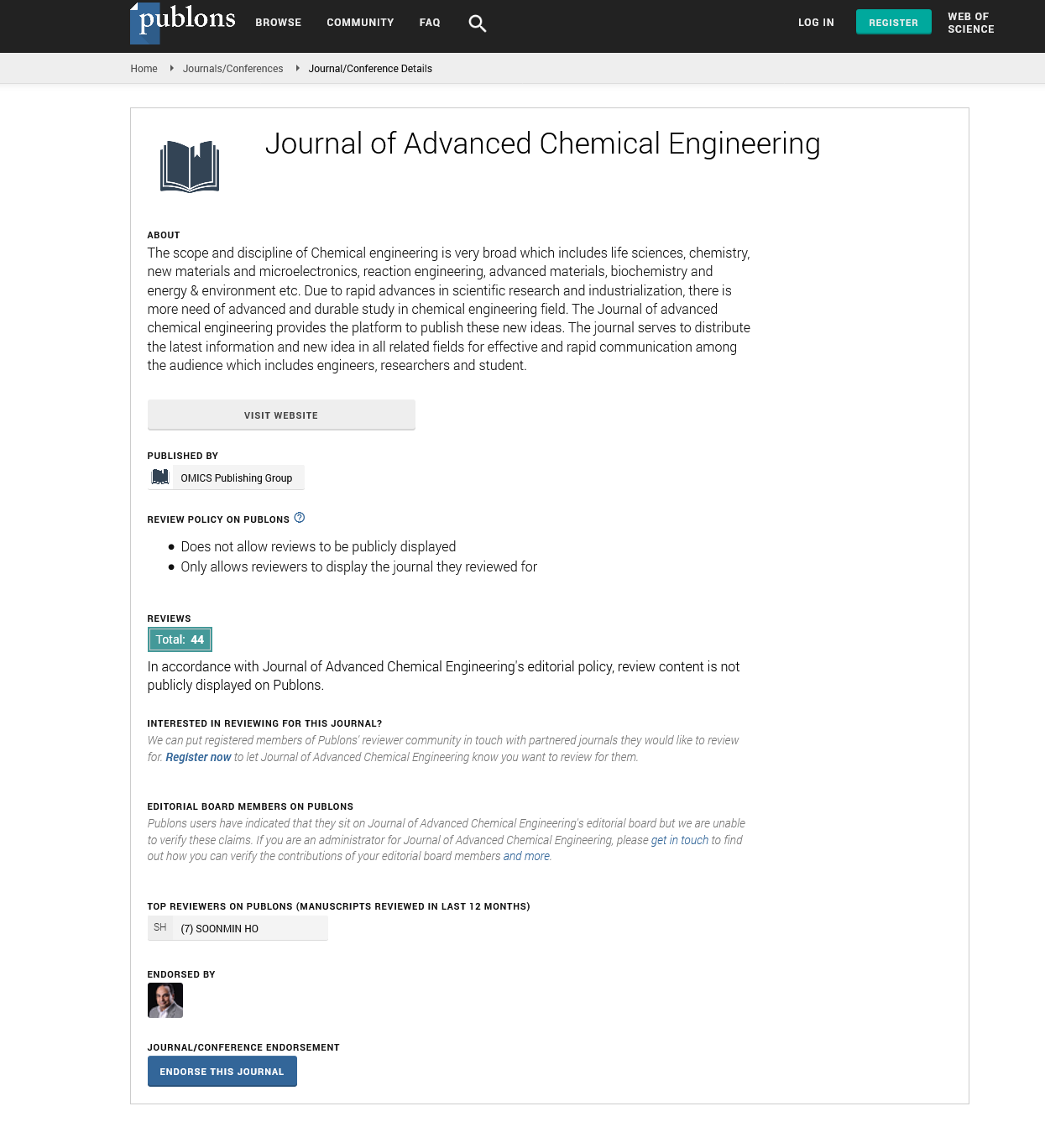Indexed In
- Open J Gate
- Genamics JournalSeek
- Smithers Rapra
- RefSeek
- Directory of Research Journal Indexing (DRJI)
- Hamdard University
- EBSCO A-Z
- OCLC- WorldCat
- Scholarsteer
- Publons
- Geneva Foundation for Medical Education and Research
- Google Scholar
Useful Links
Share This Page
Journal Flyer

Open Access Journals
- Agri and Aquaculture
- Biochemistry
- Bioinformatics & Systems Biology
- Business & Management
- Chemistry
- Clinical Sciences
- Engineering
- Food & Nutrition
- General Science
- Genetics & Molecular Biology
- Immunology & Microbiology
- Medical Sciences
- Neuroscience & Psychology
- Nursing & Health Care
- Pharmaceutical Sciences
Perspective - (2022) Volume 12, Issue 10
A Modern Approach to Chemical Hazard Process Safety Management Using Dynamic Risk Management
Chen Taon*Received: 07-Oct-2022, Manuscript No. JACE-22-18869; Editor assigned: 10-Oct-2022, Pre QC No. JACE-22-18869 (PQ); Reviewed: 28-Oct-2022, QC No. JACE-22-18869; Revised: 03-Nov-2022, Manuscript No. JACE-22-18869 (R); Published: 11-Nov-2022, DOI: 10. 35248/2090-4568.22.12.254
Description
Chemicals play a significant part in people's daily lives all over the world and are utilised to create almost every product that has been created by humans. The third-largest industrial sector in the world is the chemical industry. It supports almost 10 million jobs globally and provides governments with billions of euros in tax income and shareholder value. In terms of revenue, employment, and GDP, the pharmaceutical business has been regarded as active and expanding (GDP). Companies, government authorities, and researchers all concentrate on the "safety" of the products and how they affect customers and the environment.
Chemical risks are created during chemical synthesis, manufacture, processing, and transportation and have an impact on both human health and the environment. A specific category of occupational risk brought on by exposure to chemicals at work is a chemical hazard. Chemical exposure at work can have negative short-term or long-term impacts on health. Hazardous chemicals come in a wide variety of forms, such as neurotoxins, immunological stimulants, dermatologic irritants, carcinogens, reproductive toxins, systemic toxins, asthma genes, pneumoconiotic agents, and sensitizers.
Process safety is a structured approach to managing the integrity of operational processes and systems that handle hazardous materials. Process safety focuses on the avoidance and mitigation of process hazards that may result in the release of chemicals or energy, as opposed to occupational safety, which is concerned with risks that could cause health problems (such as slips, trips, and falls). These dangers could ultimately have detrimental effects on human health, the environment, assets, and production.
Academic research is frequently thought to carry substantially lower hazards than activities in the large-scale process industry. Although there may be fewer risks and lesser inventories of hazardous materials in university settings, variables like the architecture of laboratories and the proximity of researchers to their equipment may result in significant individual risk for lab workers. Better risk management procedures are required in academic teaching and experimental research labs, as shown by the number of recorded lab incidents that have led to fatalities, serious injuries, and monetary losses worldwide.
Universities house a wide variety of hazards in their academic and research labs, and if these risks are not properly managed, they can be very serious. In part because of a lack of hazard awareness, the myth that university labs are "low risks" and "inherently safer" persists both inside and outside of academia.
In order to assist the PSM initiatives of the next generation, riskbased methodologies were established. The comprehensive studies of Canvey Island and the Rijnmond region are regarded as the forerunners of such techniques in chemical clusters throughout Europe. In the Ravenna chemical cluster, a project aimed at risk-based decision making was created in 1988. Such techniques are now necessary to assist the application of Seveso Directives in the UK and the Netherlands. Risk-based PSM techniques, however, were much later introduced in the US. The Center for Chemical Process Safety (CCPS) first suggested the implementation of risk-based process safety in 2007.
Citation: Taon C (2022) A Modern Approach to Chemical Hazard Process Safety Management Using Dynamic Risk Management. Adv Chem Eng. 12:254.
Copyright: © 2022 Taon C. This is an open-access article distributed under the terms of the Creative Commons Attribution License, which permits unrestricted use, distribution, and reproduction in any medium, provided the original author and source are credited.

